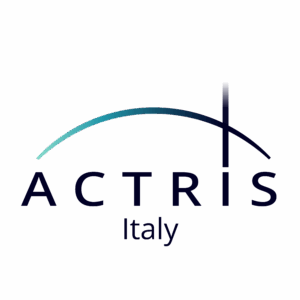Research infrastructures
The research activities of CIAO revolve around long-term observations of aerosols, clouds, trace gases, and greenhouse gases within the European research infrastructures ACTRIS and ICOS.
ACTRIS (Aerosol, Clouds and Trace Gases Research Infrastructure) is a European Research Infrastructure that was officially established as ERIC in 2023, realizing an effort started in 2011 and pursued by the 17 founding countries by pooling their resources to open access to a wide range of technologies, services and resources in the field of atmospheric sciences which provides cutting-edge data and services to support atmospheric and climate research.
In particular, ACTRIS allows access to key information on the state of the atmosphere, thanks to a network of observation platforms capable of generating an unprecedented amount of data, with which to support the decision-making process of political institutions.
The CNR-IMAA has a key role in ACTRIS since its foundation with the coordination of the European FP7 ACTRIS project.
In ACTRIS ERIC, four ACTRIS Central Facilities are operational at the CNR-IMAA:
- The SAMU (Service Access Management Unit) of the Head Office;
- The ARES (Aerosol Remote Sensing) unit of the Data Center;
- The AHL (Aerosol High power Lidar) unit ;
- The DVAS (Data Discovery, Virtual Access and Services) unit of the ACTRIS DC.
Furthermore, the CNR-IMAA is also a National Facility for ACTRIS equipped with 1 Observation Platform and 1 Exploratory Platform.
ICOS (Integrated Carbon Observation System, https://www.icos-cp.eu/) is a European research infrastructure that provides standardized measurements relating to the main greenhouse gases – such as carbon dioxide (CO2), methane (CH4 ), nitrous oxide (N2O), carbon monoxide (CO) – making use of the most advanced instrumentation and scientific know-how in the field.
Within ICOS, the Institute of Methodologies for Environmental Analysis (IMAA) of the National Research Council (CNR), thanks to funding of approximately €3 million from the Ministry of University and Research, has started the process to operate as a continental atmospheric station of the most advanced level, thus taking an important step for the expansion of the ICOS atmosphere network in Italy and Europe and strengthening the presence of the infrastructure in the Mediterranean basin. ICOS Atmospheric Class 1 site – Potenza



